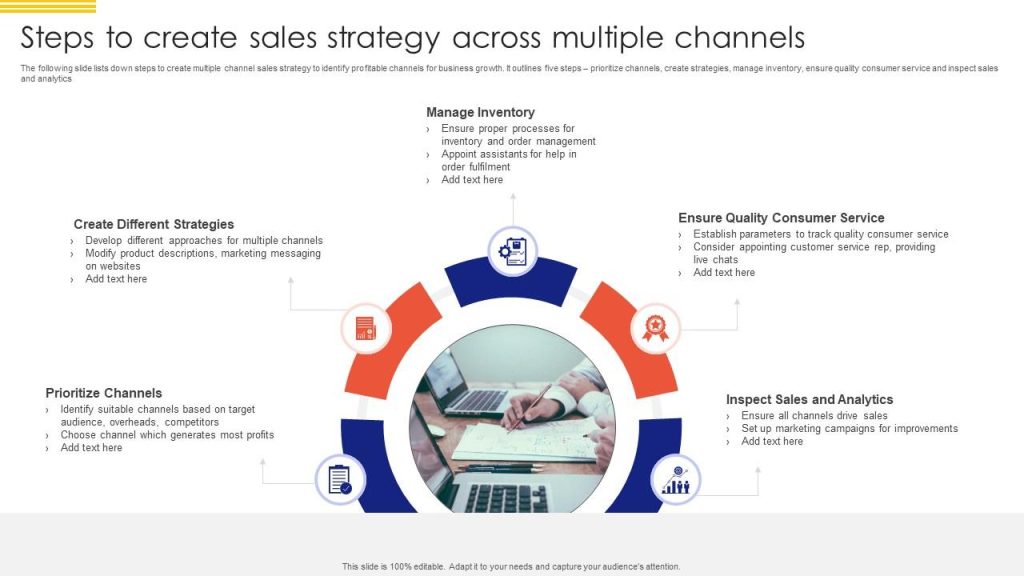

Managing sales across multiple channels presents a significant challenge, especially in today’s dynamic and multifaceted business environment. Effective strategies are crucial for maintaining order and maximizing sales performance. From traditional brick-and-mortar stores to online marketplaces and social media campaigns, businesses face complex hurdles in consolidating and organizing their sales data. This comprehensive guide dissects the intricacies of managing sales across multiple channels, offering actionable solutions for streamlined processes and optimal performance. The guide will cover several key areas, including understanding your sales channels, choosing the right tools, and training your sales teams. This structure will provide a roadmap to help you master this crucial aspect of business success.
Understanding Your Sales Channels
Identifying and Categorizing
To effectively manage sales across multiple channels, it’s imperative to understand each channel thoroughly. This involves identifying the specific channels you use—such as retail stores, e-commerce platforms, social media marketing, and direct sales—and meticulously categorizing the sales processes for each. Understanding the strengths and weaknesses of each channel will enable you to tailor your strategies and allocate resources effectively. For instance, a physical store might excel at customer interaction and building relationships, whereas an online store may offer greater flexibility and a wider reach.
Analyzing Channel Performance
Data analysis plays a crucial role in assessing the performance of each individual sales channel. Collect key performance indicators (KPIs) to gauge the effectiveness of each channel, and identify which channels are driving the most significant revenue and customer engagement. Use this data to determine which channels are performing best and which need improvement. This process allows you to proactively adapt your strategies and optimize your approach to maximize efficiency and profitability. Consider tools that offer aggregated performance insights across all channels for a clear overview.
Choosing the Right Tools
Centralized Sales Platform
A centralized sales platform is a pivotal component in managing sales across multiple channels. It acts as a single source of truth for all sales data, offering a unified view of customer interactions, sales data, and performance metrics across all sales channels. This functionality enables a 360-degree view of customer engagement, enhancing the sales process and enabling data-driven decision-making. Consider using CRM software to manage customer data and interactions across channels. This integration with your existing systems further streamlines sales and customer service operations. A well-structured sales platform will help sales teams track deals more effectively and provide a collaborative workspace.
Integrating CRM and Other Systems
Integrating your CRM system with your various sales channels is crucial for seamless information flow and effective customer relationship management (CRM). By integrating your CRM with other tools and platforms, you can gather detailed sales data and performance metrics, enabling a comprehensive view of customer interactions. This integration provides a cohesive view of the customer journey, from initial contact to purchase and beyond. This enhances customer satisfaction and loyalty while streamlining your sales process. By having everything centralized you get a detailed overview of sales patterns and identify opportunities for improvement.
Training Your Sales Teams
Consistent Brand Messaging
Sales teams operating across multiple channels must adhere to consistent brand messaging and guidelines. This ensures a unified customer experience, regardless of the sales channel. Develop standardized sales scripts and training materials to ensure that every customer interaction delivers a consistent experience. Standardized procedures for pricing, promotions, and customer service ensure a smooth and error-free transaction process.
Comprehensive Channel Training
Provide comprehensive training to your sales teams about each individual sales channel. This training should cover the specific nuances, features, and functionalities of each platform to ensure team members are well-versed in navigating these channels effectively. Understanding the strengths of each channel, sales procedures, and customer relationship management will streamline sales and increase productivity. Provide in-depth training to your sales team on the specifics of each channel to enhance their skills and effectiveness. This training should also include real-world examples and best practices for working across channels.
Implementing a Robust Reporting and Analysis System
Tracking Key Performance Indicators (KPIs)
Tracking key performance indicators (KPIs) is essential to monitor the success and effectiveness of your sales efforts across multiple channels. Identify the KPIs most relevant to each channel and establish clear benchmarks for performance. Tracking these indicators helps assess the effectiveness of your strategies and determine which channels are underperforming. Regular monitoring enables identification of patterns and trends, enabling you to make data-driven decisions to optimize your sales performance. This iterative process allows for continuous improvement in sales strategy and techniques.
Identifying Areas for Improvement
Analyzing the performance data collected allows for the identification of areas requiring improvement across multiple channels. Identify trends, patterns, and areas where your sales strategies are not as effective as they could be. By actively seeking out and addressing areas for improvement, you can enhance the efficiency and profitability of your sales strategy. Using the identified information, establish corrective actions for improving underperforming areas. This enables proactive adjustments to maximize return on investment (ROI).
Maintaining Organization
Establishing Clear Communication Protocols
Establish clear communication protocols for teams working across various channels. This includes defining communication channels, response timeframes, and methods for handling inquiries across departments to ensure a seamless customer experience. Clear communication and procedures help ensure consistent service across all touchpoints and resolve customer issues quickly and efficiently. This ensures prompt resolution for customers.
Frequently Asked Questions
How can I determine which sales channels are most profitable?
To determine the most profitable sales channels, meticulously track key performance indicators (KPIs) such as conversion rates, average order value, and customer lifetime value for each channel. Analyze the data to identify which channels generate the highest revenue and customer lifetime value. Identify the most profitable channels and adjust your resource allocation accordingly to maximize returns. Analyzing sales data will reveal the channels yielding the highest revenue and customer value.
What are some common obstacles when managing sales across multiple channels?
Common obstacles include maintaining consistent branding across all channels, ensuring seamless data integration between systems, and training sales teams to effectively manage multiple platforms. Managing inconsistent messaging or procedures can be particularly challenging, leading to confusion. Additionally, integrating sales data across disparate platforms can be a significant hurdle, requiring careful planning and consideration of all systems. These integration challenges may also affect customer service and create inconsistencies in customer experience.
In conclusion, managing sales across multiple channels effectively requires a strategic approach that integrates diverse tools, systems, and processes. A centralized sales platform that offers a unified view of customer interactions, sales data, and performance metrics is essential. Furthermore, a focus on sales team training and communication is critical to ensure consistency and efficiency across all channels. Consider implementing a robust reporting and analysis system to track key performance indicators and identify areas for improvement. Investing in this comprehensive approach will enable businesses to optimize sales across various channels and drive significant revenue growth. Contact us today to discuss how our tailored sales management solutions can help your team achieve these goals.